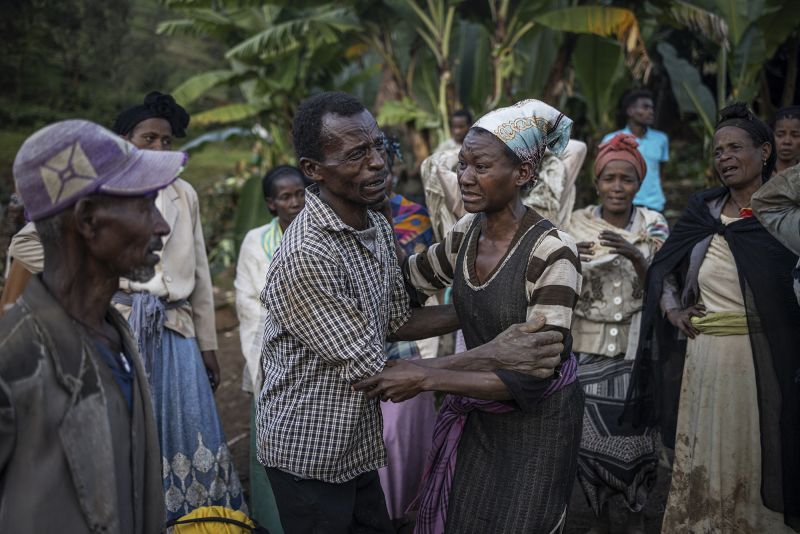As the days pass, the haunting reality of the Ethiopia landslide slowly unfurls, revealing a solemn toll that now stands at 257 deaths. The United Nation’s grave warning suggests that this figure could soon surpass 500, grimly underlining the severity and dire implications of the catastrophic landslide.
Experts have pointed to detrimental, unsupervised land management methods, along with illegal mining activities as pivotal causes of the landslide. This grim disaster has vividly illustrated the fatal impact of widespread destabilization of the region’s geological structure due to unchecked human activity.
The catastrophe unfolded in the early hours of March 12 in the southwestern part of the capital city, Addis Ababa. Dozens of humble dwellings in the Koshe landfill site, makeshift homes for a substantial part of Ethiopia’s impoverished populace, were swallowed up in the landslide’s wake, leading to the soaring death toll that the world now mournfully acknowledges.
Rescue and recovery efforts have been ongoing, painstaking, and challenging since the disaster occurred. Search teams, vintage in composition of Ethiopia’s military personnel and countless volunteers, have worked relentlessly day and night in their tireless efforts to unearth survivors, and more grimly, those who did not survive. Their unwavering commitment coupled with international reinforcement has been crucial in managing the repercussions of this disaster.
What has perhaps added to the sorrowful echo of this tragedy are individual stories of loss that cascade from the rubble. A father, who lost five sons, consumed in the schism of earth. A mother, her two daughters were taken by the hungry landslide. These personal heartbreaks bare the human element of the disaster, giving it a face, and making the reality of it all the more poignant.
This unfolding crisis has prompted the United Nations to issue a stark warning – that the death toll could surpass the 500 mark. This projection, while absolutely heart-wrenching, aligns with the continuous recovery of bodies from the scene and the large number of inhabitants known to have been living in the area prior to the landslide. The anticipated rise in fatalities underscores the urgency needed in addressing what is a large-scale and complex humanitarian disaster.
Even as the world stands with Ethiopia in this trying time, questions about the government’s disaster prevention strategies arise. The stark fact that no emergency warning was issued prior to the catastrophic landslide has evoked criticism from various quarters. Furthermore, the legislature’s decision to reinstate jail terms for journalists who broadcast reports contrary to the government’s messaging has shrouded the entire reportage in the crisis in a flickering uncertainty.
As the world grapples with the grim reality of this disaster, the excruciating toll in human lives soberly underscores why mitigating the effects of unchecked human activity and giving due attention to disaster prediction, preparation, and response should be of paramount concern for government worldwide.
In the face of adversity, Ethiopia has stood strong. Apart from the humanitarian work done by numerous non-profit organizations and the Ethiopian government’s relentless efforts, the communal spirit of the Ethiopian people is visibly bold. Yet, it is undoubtedly clear that something deeper is amiss in the governance mechanisms that should anticipate such disasters.
Transcending the immediate crisis, this disaster is a wake-up call for countries globally to review their attitudes towards climate change, disaster management, and urbanization. The Ethiopia landslide aftermath unavoidably reflects upon how a collective global failure to address these issues can lead to irreversible tragedy and loss. Developing contingency plans to avert such disasters must be seen not just as a responsibility, but as an urgent necessity in this ever-changing world.




